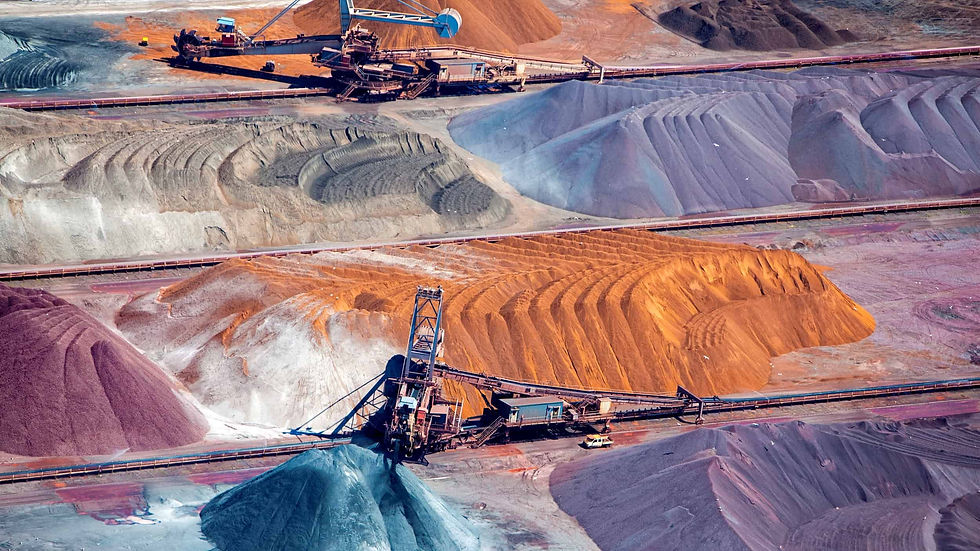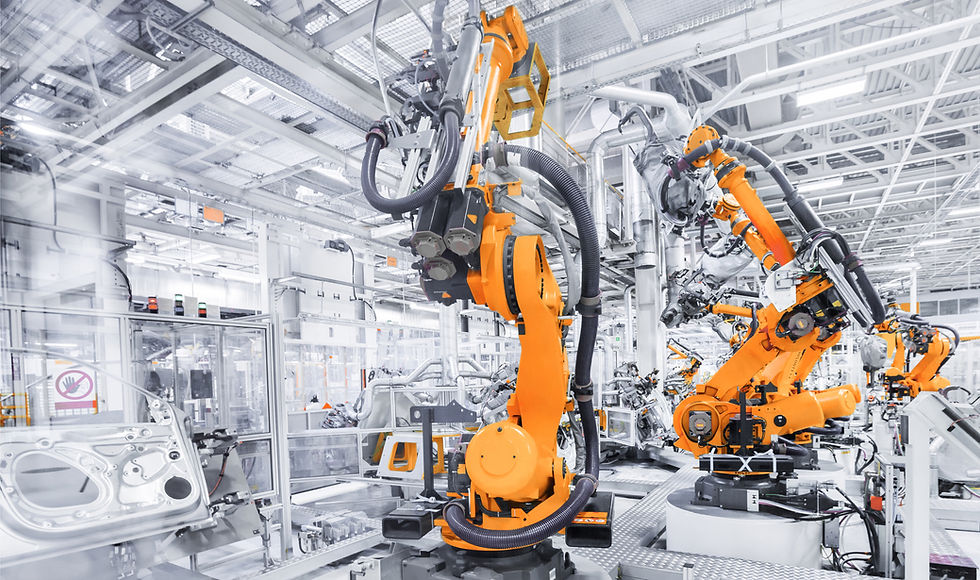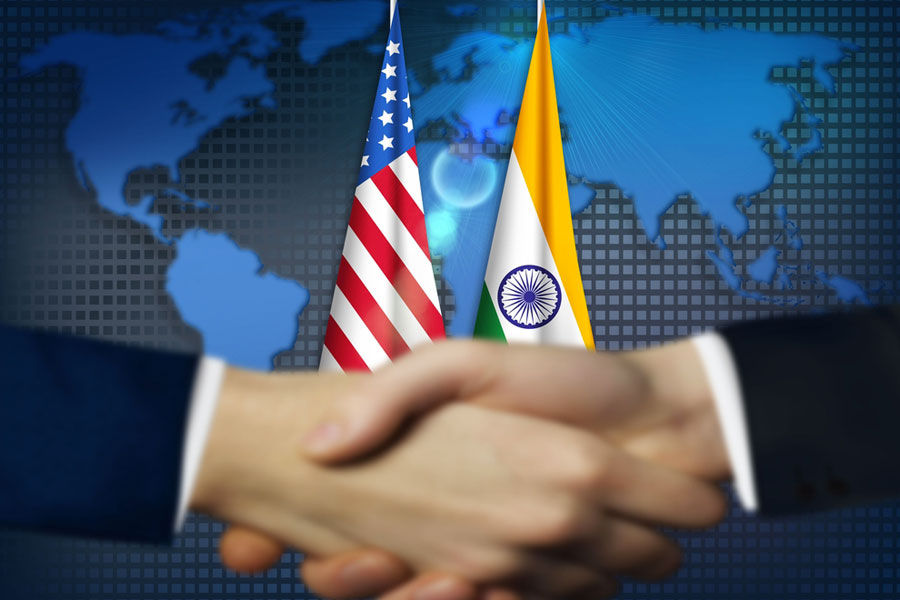Critical Minerals and India's Industrial Future: Securing the Foundations of Innovation
- Aegion Aerospace
- Jun 25
- 4 min read

The foundation of India’s clean energy, e-mobility, and high-tech industrial future rests not just on factories or software—but on critical minerals.
From lithium, cobalt, and nickel in battery storage to rare earth elements in electric motors and wind turbines, these raw materials power the technologies reshaping economies. But for India, which currently imports most of these resources, the challenge is not just access—but equitable, scalable, and sustainable access.
Fortunately, one of India’s most strategic allies—the United States—is also confronting similar supply chain challenges. Together, India and the U.S. are poised to lead a new era of critical mineral cooperation, especially benefiting industrial sectors and next-gen innovators.
The Industrial Stakes: Clean Energy and Mobility
India’s industrial ambitions are massive:
500 GW of renewable capacity by 2030
30% electric vehicle penetration in private transport
A burgeoning grid storage market expected to reach 100+ GWh
Each of these sectors demands secure access to minerals like lithium (for batteries), vanadium (for flow storage), graphite (for anodes), and rare earths (for wind turbine magnets and EV motors). Without reliable supply, costs spike, manufacturing slows, and green targets are delayed.
Case in Point:
India’s PLI Scheme for Advanced Chemistry Cell (ACC) battery storage attracted top players like Reliance and Ola Electric, but domestic lithium processing is still in infancy. Even though reserves were discovered in Jammu & Kashmir (5.9 million tonnes) and Karnataka, processing tech and commercial-scale refining remain bottlenecks.
The Startup Gap: Innovation Held Back by Material Access
India’s cleantech startups—from battery recyclers to graphene innovators—are rapidly growing. But many lack:
Access to critical raw materials.
Reliable supply chains for testing or prototyping.
Affordable small-volume mineral sources.
Example: Startups like Log9 Materials (aluminum–fuel batteries) and Nunam (EV battery reuse) are innovating on sustainability but face delays due to lack of refined domestic mineral input or high dependency on imports, often priced at large-industry volumes. Similarly, Aegion is addressing critical bottlenecks in material dependency through its proprietary high-performance alloys—Aegion X01 designed to replace silver in conductive applications, and Aegion Nx022, a dysporium–free magnetic alloy intended to serve as a scalable alternative to dysprosium-based components. These innovations aim to de-risk India’s industrial future from volatile global supply chains and promote domestic material sovereignty.
U.S.–India: A Strategic Mineral Partnership in Motion
The U.S.–India Critical Minerals Working Group, launched under the U.S.–India Strategic Clean Energy Partnership (SCEP), is already addressing key barriers through:
Joint assessments of mineral potential in India and the Indo-Pacific.
Technical collaboration on refining, processing, and recycling.
Policy alignment on responsible sourcing and transparency.
Example: DOE–MEITY Collaboration on Materials R&D
The U.S. Department of Energy (DOE) has been actively engaging with India’s Ministry of Electronics and Information Technology (MEITY) and academic institutions to support R&D on rare earth magnet production, silicon purification, and efficient battery materials.
Example: Khanij Bidesh India Ltd. (KABIL)
India’s state-backed entity KABIL has signed agreements with Argentina for lithium blocks. The U.S. has expressed interest in aligning its Mineral Security Partnership (MSP) with India’s overseas mining missions to co-invest in sustainable extraction from Latin America to Australia.
How the U.S. Can Strengthen India's Critical Mineral Ecosystem
To translate strategy into scalable outcomes, the India–U.S. partnership can go deeper across three pillars:
1. Co-develop Midstream Infrastructure
While India begins refining lithium and rare earths domestically, U.S. companies with expertise in hydrometallurgy and solvent extraction (e.g., MP Materials, EnergyX) can:
Partner in technology transfer and build-to-operate models.
Co-establish processing parks near Indian reserves or ports like Vizag or Kandla.
2. Support Startup Mineral Access
U.S. mineral exchanges and supply chain innovators (e.g., KoBold Metals, Lilac Solutions) can:
Open small-batch, India-facing distribution channels for startups.
Provide early-stage sample support, helping Indian innovators experiment and validate materials.
India’s Atal Innovation Mission and the U.S. ARPA-E could co-fund binational startups working on low-cobalt cathodes, solid-state batteries, etc.
3. Build Data and Traceability Infrastructure
The U.S. has pioneered mineral mapping, lifecycle tracking, and blockchain traceability for critical minerals. Sharing this knowledge through:
Joint workshops with Geological Survey of India (GSI) and USGS.
Pilots on AI-driven deposit mapping in Northeast India, or Ladakh.
Recommendations: Scaling Together, Equitably
Here’s how India and the U.S. can practically build a more open and resilient critical mineral ecosystem:
1. U.S.–India Mineral Innovation Fellowships
Offer joint fellowships for researchers and entrepreneurs in both countries to co-develop refining tech, circular mineral solutions, and material-efficient designs.
2. Binational Urban Mining Pilots
Launch India–U.S. e-waste recycling and mineral recovery pilots in cities like Bangalore and Austin—sharing insights on lithium-ion battery recovery or printed circuit board upcycling.
3. Shared Startup Material Access Facilities
Develop shared labs and small-volume mineral stock access hubs supported by institutions like IIT Madras Research Park, in partnership with U.S. tech parks and research institutes.
Conclusion: A Shared Path to Mineral Resilience
Critical minerals are no longer just a mining issue—they are a strategic enabler of climate goals, manufacturing growth, and innovation equity. For India, this is a moment to design a supply chain that’s resilient, circular, and inclusive. For the U.S., it’s a chance to reinforce global alliances while co-building scalable green economies.
Together, the U.S. and India can lead the world in designing critical mineral ecosystems that aren’t just competitive—but collaborative.
Vision 2060 sees this partnership as more than bilateral—it’s a blueprint for shared industrial sovereignty in the clean age.



Comments